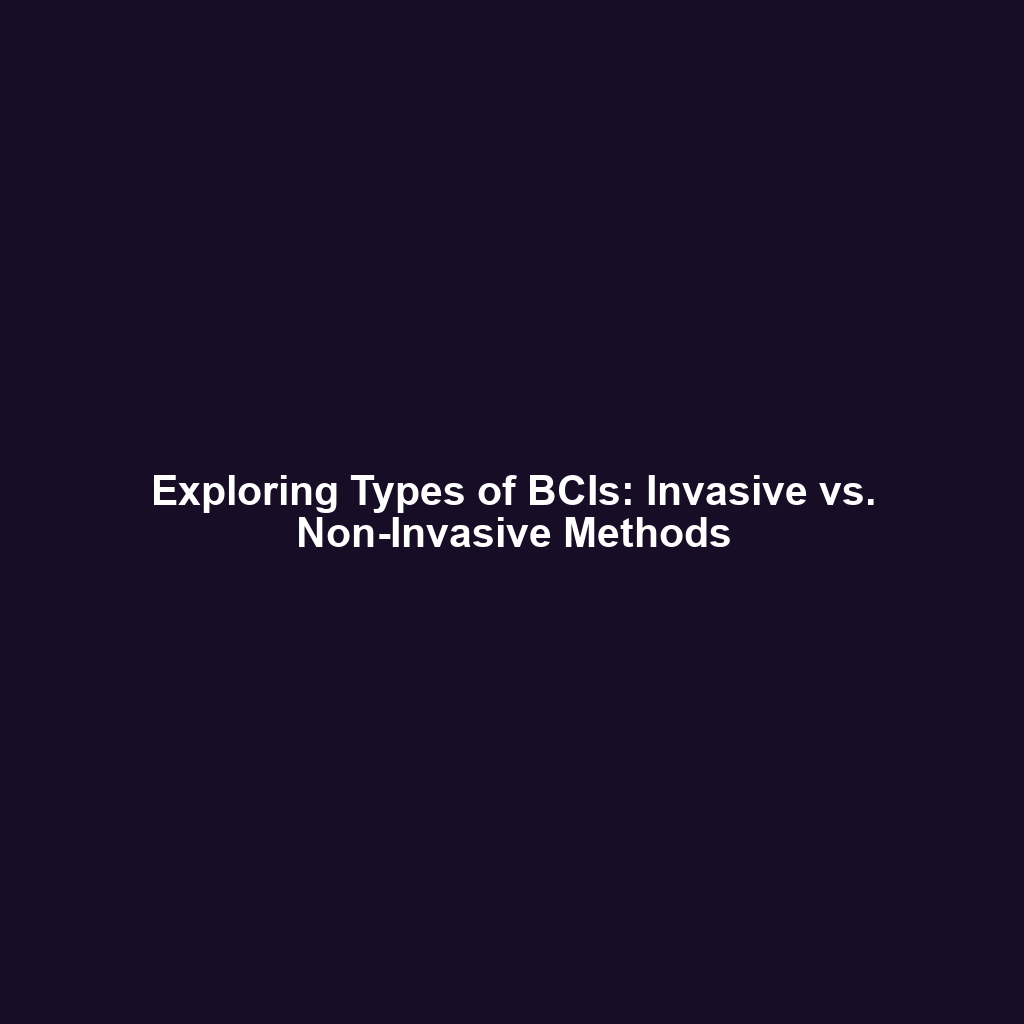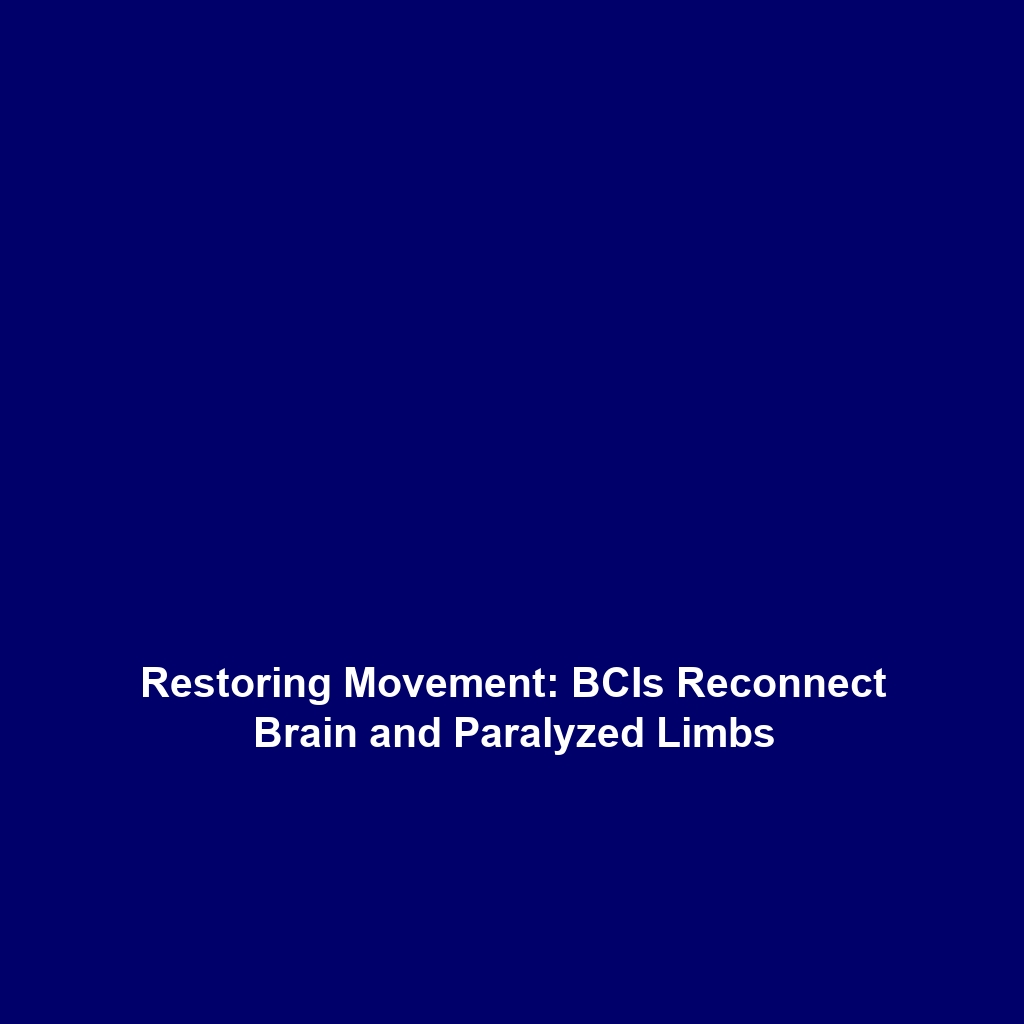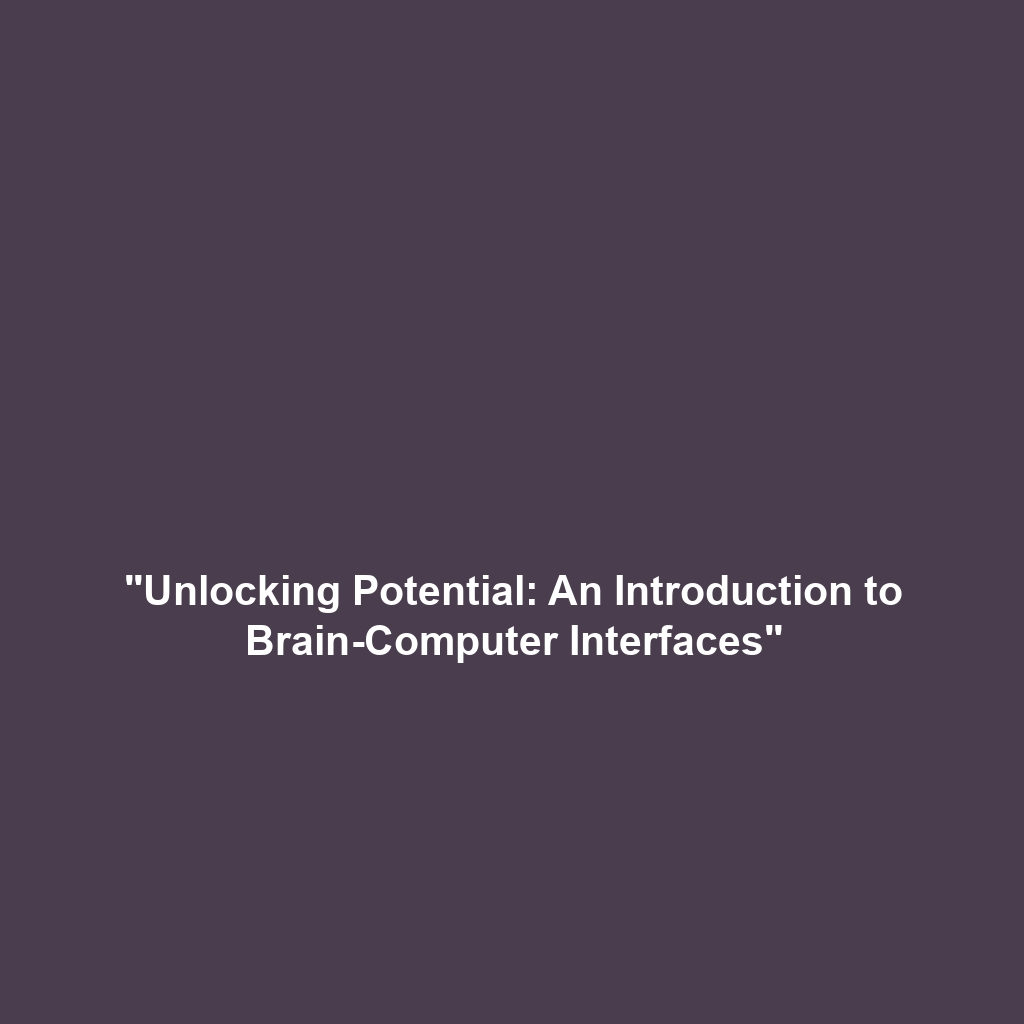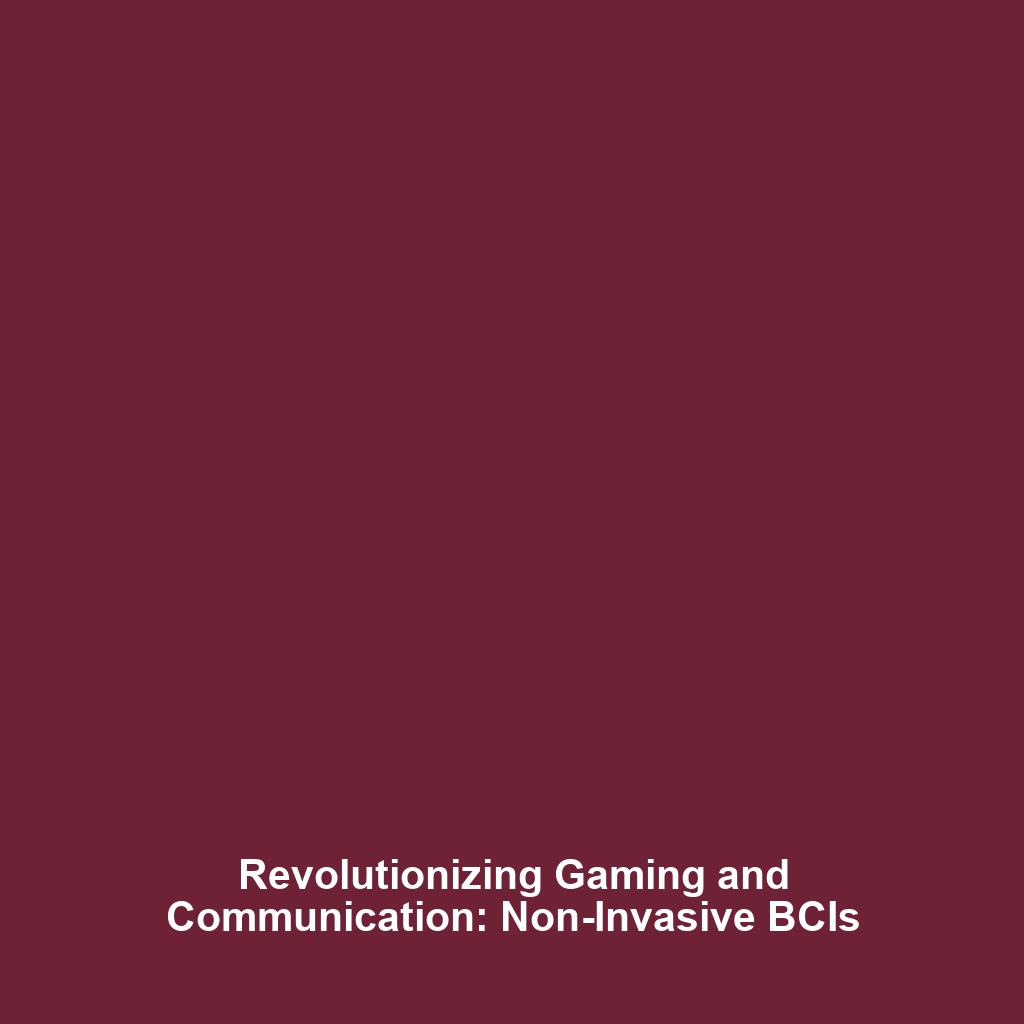Types of Brain-Computer Interfaces: Invasive vs Non-Invasive
Brain-Computer Interfaces (BCIs) represent a revolutionary intersection of neuroscience and technology, enabling direct communication between the brain and external devices. BCIs can be categorized into two main types: invasive and non-invasive. Invasive BCIs involve implantation within the brain’s tissue, offering high fidelity signal acquisition, while non-invasive approaches utilize external sensors, such as EEG caps. Understanding these contrasting methods is vital, as it lays the foundation for future innovations and applications in various fields, including medicine, rehabilitation, and assistive technologies.
Key Concepts of BCIs
Before diving into applications and challenges, it’s essential to grasp the foundational concepts surrounding BCIs:
Invasive BCIs
Invasive BCIs typically involve the surgical implantation of sensors directly into the brain tissue. This method allows for precise signal acquisition, which is crucial for applications requiring high-resolution data, such as movement control in neuroprosthetics. Examples include:
- Neuroprosthetic control for individuals with spinal cord injuries
- Restoration of sensory functions in patients with neurological disorders
Non-Invasive BCIs
Conversely, non-invasive BCIs utilize external electrodes placed on the scalp to capture brain activity patterns, often through electroencephalography (EEG). Despite lower signal precision compared to invasive methods, they present safer alternatives with a range of applications, such as:
- Accessibility tools for individuals with disabilities
- Gaming and entertainment technologies
Applications and Real-World Uses
The significance of understanding the types of BCIs extends to their diverse applications:
- Invasive BCIs: Revolutionizing rehabilitation for stroke victims through targeted movement training.
- Non-Invasive BCIs: Enhancing user experience in virtual reality environments by translating brain signals into commands.
Applications of BCIs are not limited to healthcare; they extend into entertainment, gaming, and even military uses, showcasing their versatility and transformative potential.
Current Challenges
Despite their promise, there are significant challenges in the study and application of BCIs, including:
- Invasive procedures pose surgical risks and ethical dilemmas.
- Non-invasive methods often suffer from lower data quality.
- Limited understanding of long-term effects of brain interaction with external devices.
Future Research and Innovations
Looking ahead, research in BCIs is set to expand with innovations such as:
- Advancements in materials for safer and more effective invasive devices.
- Development of algorithms to enhance the accuracy of non-invasive signal interpretation.
- Integration of machine learning techniques to predict user intentions based on brain activity.
Conclusion
In summary, the types of Brain-Computer Interfaces—whether invasive or non-invasive—are crucial components driving the evolution of assistive technology and neuroprosthetics. As research continues to unravel new methods and applications, the potential for these interfaces to improve lives becomes more apparent. For further exploration, consider reading our article on the future of brain technologies.




